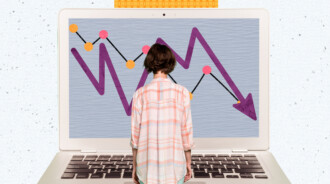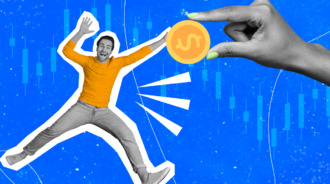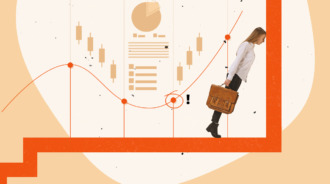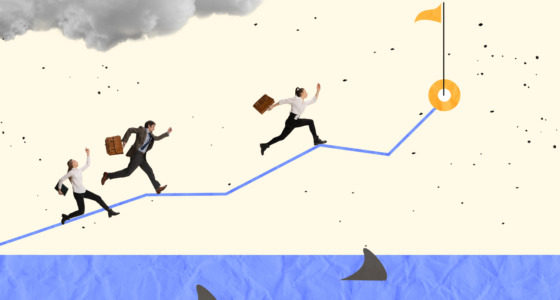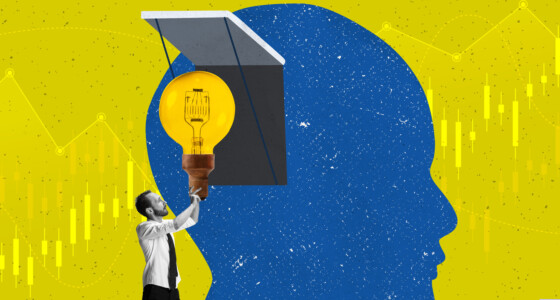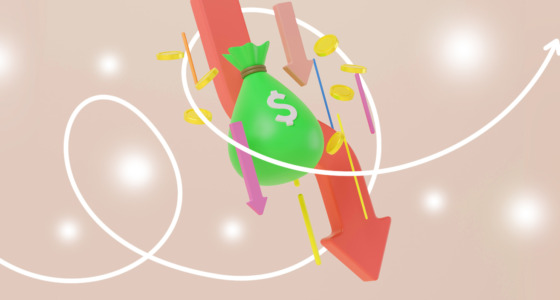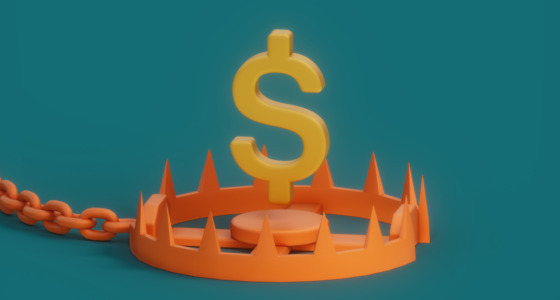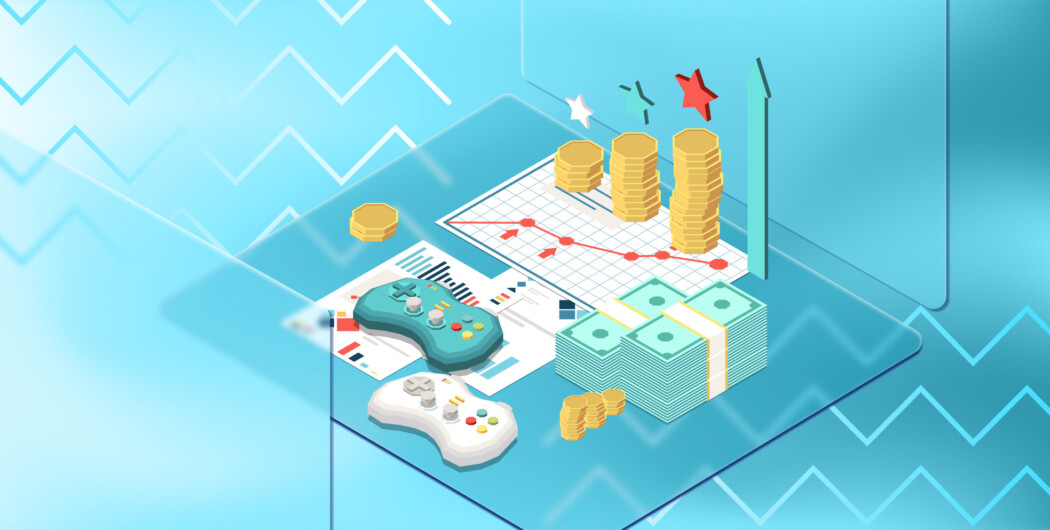

Gamification, a concept obviously born from the world of gaming, has transcended traditional boundaries to infiltrate industries far beyond entertainment. And that’s good because game-based motivation increases user engagement by 48%, and 89% of people are willing to use an app for longer if it has game-like elements. Now, it’s in trading.
If you’re curious to learn about the captivating synergy between gamification and trading psychology, read on.
Introducing gamification in trading
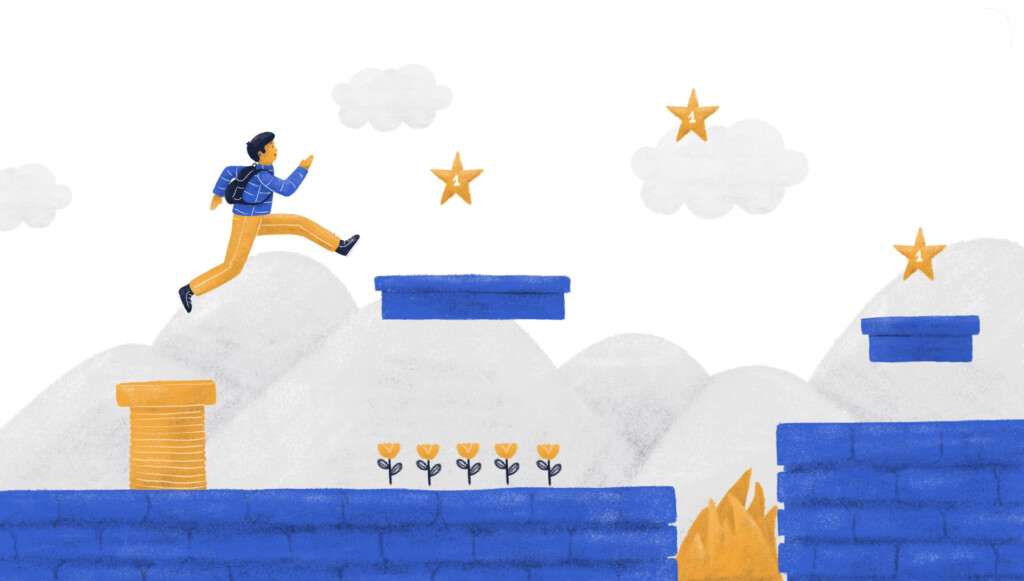
Gamification taps into humans’ natural inclinations for competition, accomplishment, collaboration, and generosity. It carries tools from game design, like rewards for achievements, progressing levels, and earning badges, into the trading world to motivate individuals and boost some kind of practice.
You’ve probably seen gamification in action, even if you didn’t realize it. Take frequent flyer rewards programs offered by airlines, for instance – that’s gamification at work. When it comes to trading, it’s all about bringing elements from the gaming world into the trading environment to encourage traders to achieve their goals. This approach blurs the line between trading and entertainment and hopefully makes the trading experience more engaging and motivating.
One online experiment showed a distinct trading behavior pattern emerged based on participants’ gamification preferences. Those inclined towards hedonic gamification showcased noisy trading strategies. At the same time, participants favoring non-gamified platforms exhibited more pronounced contrarian behavior. Feel free to interpret this information in your own way, but this is definitely an interesting correlation.
Gamification techniques
Among the arsenal of gamification tools, three stand out as potential catalysts for transformation: leaderboards, achievement badges, and virtual rewards.
Leaderboards
Leaderboards are visual displays that rank participants based on their performance or achievements within a trading platform. They can showcase various metrics, like trading profits, success rates, or portfolio growth. Traders can see where they stand compared to others, which creates a sense of competition and motivation to improve their rankings.
Human beings are social creatures, and the need for recognition and status within a group is deeply ingrained. Climbing the ranks on a leaderboard not only signifies personal success but also showcases that success to others. Why not satisfy the need for social validation while making progress in the trading world?
Achievement badges
Achievement badges are virtual symbols of accomplishment, and they are given to traders when they meet specific milestones or complete certain tasks. These badges serve as visible markers of progress and success. For example, a trader might receive a badge for making a certain number of successful trades or reaching a particular profit target. Or consistently following a trading strategy, whatever the badge criteria might be.
Traders can mentally anchor themselves to these badges, treating them as reference points to track their journey. With a feeling of forward momentum, they’ll feel encouraged to continue striving for more badges.
Virtual rewards
Virtual rewards are any type of non-tangible incentive. These rewards could include points, tokens, or in-game currency for unlocking additional features, tools, or benefits within the trading platform.
The idea of virtual rewards is grounded in behavioral conditioning, where positive outcomes reinforce desired behaviors. When traders receive virtual rewards for certain trading decisions, the brain associates those decisions with pleasure and satisfaction. This creates a positive reinforcement loop: traders are more likely to repeat the behaviors that led to rewards.
Role of gamification in enhancing trader motivation
Motivation serves as a driving force that sustains traders’ commitment and active participation in financial markets. When traders encounter the complexities and uncertainties of trading, gamification can keep them engaged and focused on carrying on making informed decisions. Motivated traders willingly invest time and effort into analyzing market trends, executing trades, managing risk, and refining their strategies, which increases their chances of improvements in their trading proficiency.
Sure, intrinsic motivation and the desire for monetary rewards are bigger drivers. However, the incorporation of gamification elements adds an extra layer of motivation.
What is more, by presenting attainable objectives and rewards, gamification offers traders a sense of purpose and direction, and it channels their efforts towards specific trading goals or achievements. As traders achieve these goals, their motivation is reinforced, which results in heightened self-assurance and a cycle of positive progress.

Influence on traders’ perception of risk
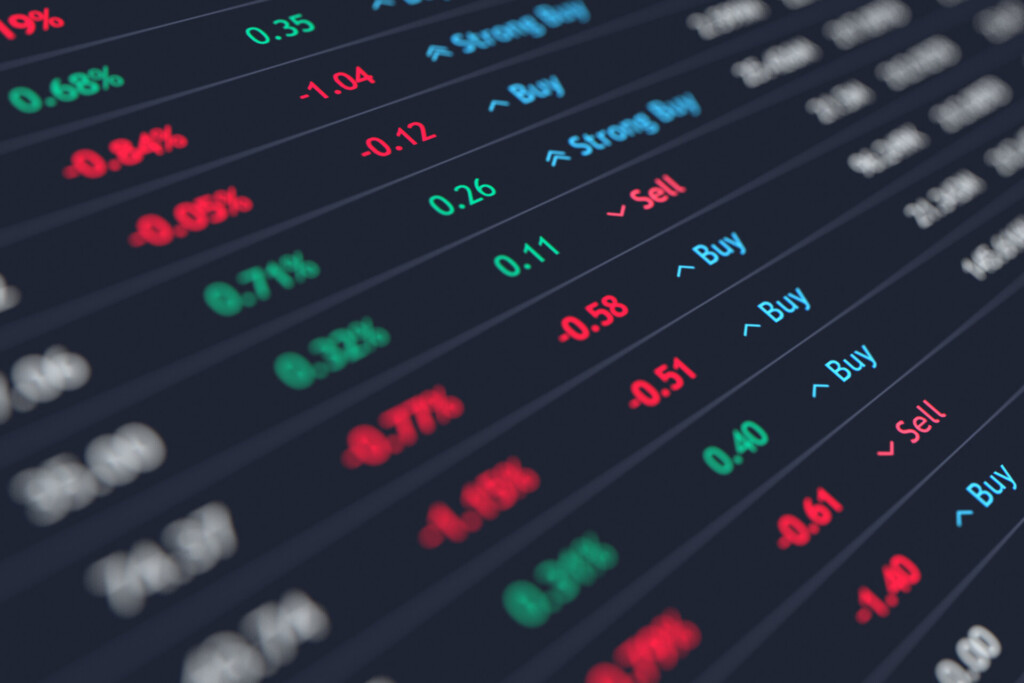
Traders’ perception of risk is where the influence of gamification becomes more intricate. Potentially a double-edged sword even.
The pursuit of badges, rewards, and higher leaderboard rankings might shift traders’ focus toward immediate gains rather than long-term profitability. For some, especially beginners, the allure of short-term rewards might overshadow the potential downsides. The result is possibly an imbalanced perception of risk.
The positive feedback loop created by gamification elements can also foster an illusion of control. Traders start believing that they have more influence over market outcomes than they actually do. And they can end up underestimating external market factors and risks that are beyond their control. Furthermore, the competitive nature of leaderboards and achievement badges creates psychological pressure to outperform peers.
However, it’s as important to recognize that gamification is not inherently detrimental. When designed and used thoughtfully, traders can achieve a balance between motivation and responsible practices.
Decision-making and cognitive biases
In a similar vein, gamification elements can impact traders’ decisions by creating additional factors to consider beyond market analysis. What if they feel inclined to make decisions that align with achieving gamified objectives even if those decisions deviate from their original trading strategy? This may result in impulsive or less-informed choices driven by something other than the strategy.
As for cognitive biases, traders commonly struggle with them as is, and game-like features may not be the best accompaniment. For example, the overconfidence bias can get worse when traders think their achievements in the gamified setup mean they’re really skilled, making them believe they’re better than they actually are. The confirmation bias could also get stronger. Traders might only look for information that matches their gamified goals and ignore different points of view.
How to avoid common mistakes
Here is how to avoid common trading mistakes when engaging with gamification:
Understand your goals
What do you hope to achieve? Are you aiming to improve your skills, increase discipline, or try new strategies in the market? Align your participation with your objectives.
Look beyond rewards
While rewards are definitely enticing, avoid getting solely motivated by them. Instead, prioritize the skills you gain and the knowledge you acquire.
Stay disciplined
Gamification should reinforce disciplined trading behavior. So, don’t take the opposite route of making impulsive decisions or taking unnecessary risks just to earn rewards. Stick to your trading strategy and risk management principles.
Avoid overtrading
Resist the siren call of overtrading. Remember: your trading success hinges on calculated decisions and strategic execution, not impromptu actions driven by the allure of instant gratification.
Assess progress with your own metrics
Tailor your assessment to align with your unique goals and trading style. This way, you’re not just chasing external markers of achievement but also tracking your development on a path that reflects your individual aspirations.
Set your own challenges
Set personal trading challenges that push you out of your comfort zone. Whether it’s improving your win rate or achieving a specific profit target, you should have individual targets that add excitement and engagement to your trading experience.
Future trends and developments

Let’s throw around a few ideas about possible developments in this space:
- Trading platforms may start to employ more personalized gamification strategies, tailoring challenges, rewards, and leaderboards to individual traders’ preferences and skill levels.
- The integration of advanced analytics and AI will enable platforms to gather more data about traders’ behavior. This will put tailored gamification experiences on a new level.
- Platforms may integrate insights from behavioral science to design more effective gamification elements. So far, these elements have been kept fairly simplistic.
- Gamification will likely provide real-time feedback on trading decisions so that traders understand the consequences of their choices and engage in continuous learning.
- VR and AR could play a role, too. Traders might be able to visualize market trends and make trading decisions in immersive virtual environments, putting them closer to the action than ever before.
- If there are integrations with social trading platforms, traders will not only be able to compete but collaborate as well.
Finally, there needs to be a bigger emphasis on responsible trading practices within gamification strategies. Trading platforms that have them should strike a balance between motivating traders and ensuring they understand and manage the risks properly.
But if you’re feeling motivated to start trading even without games, why not channel that motivation into exploring Binomo? Check out the platform and make progress in your trading journey there.
Sources:
Enhancing user engagement: The role of gamification in mobile apps, ScienceDirect
Trading gamification and investor behavior, SSRN
Gamification: what it is, how it works, risks, Investopedia
